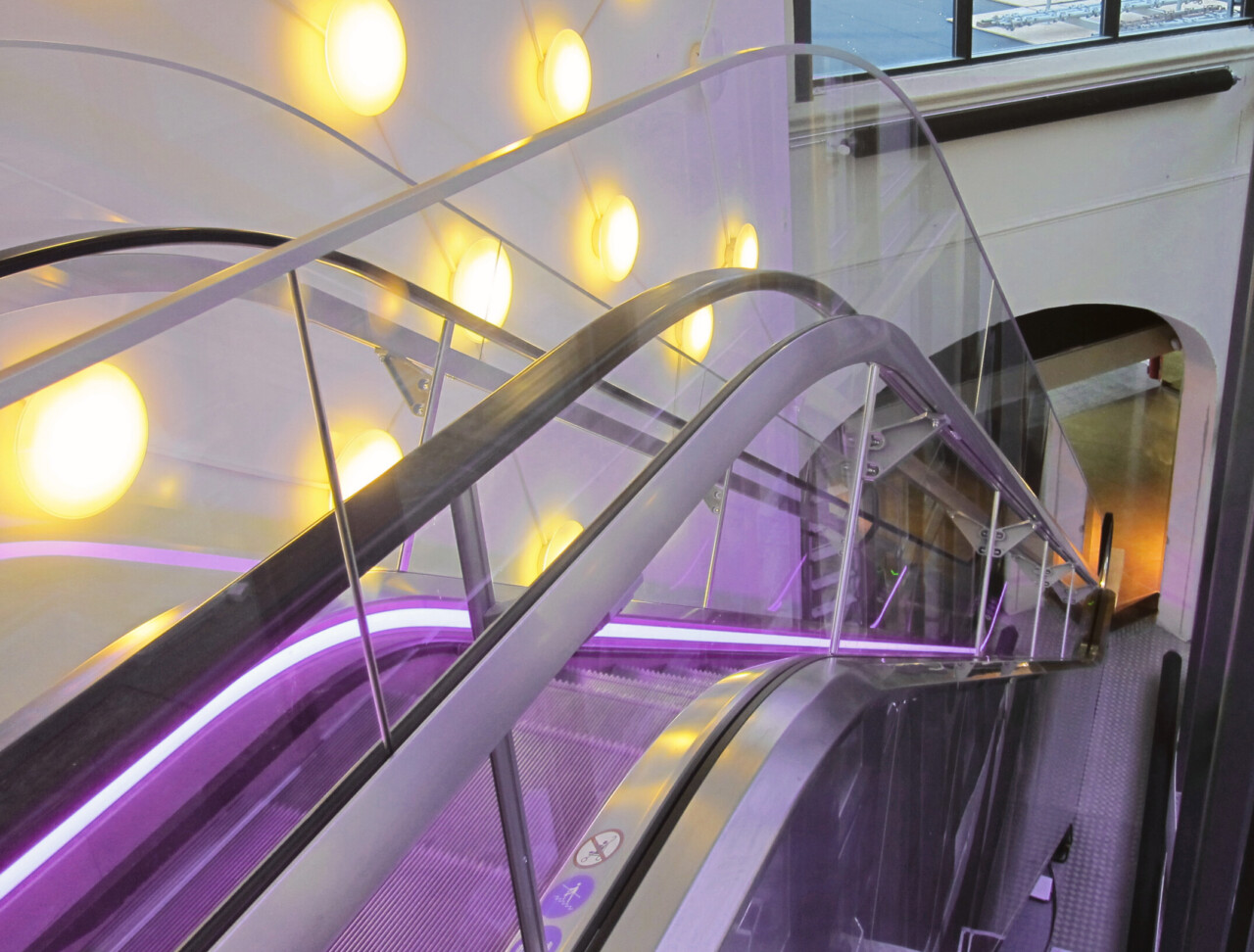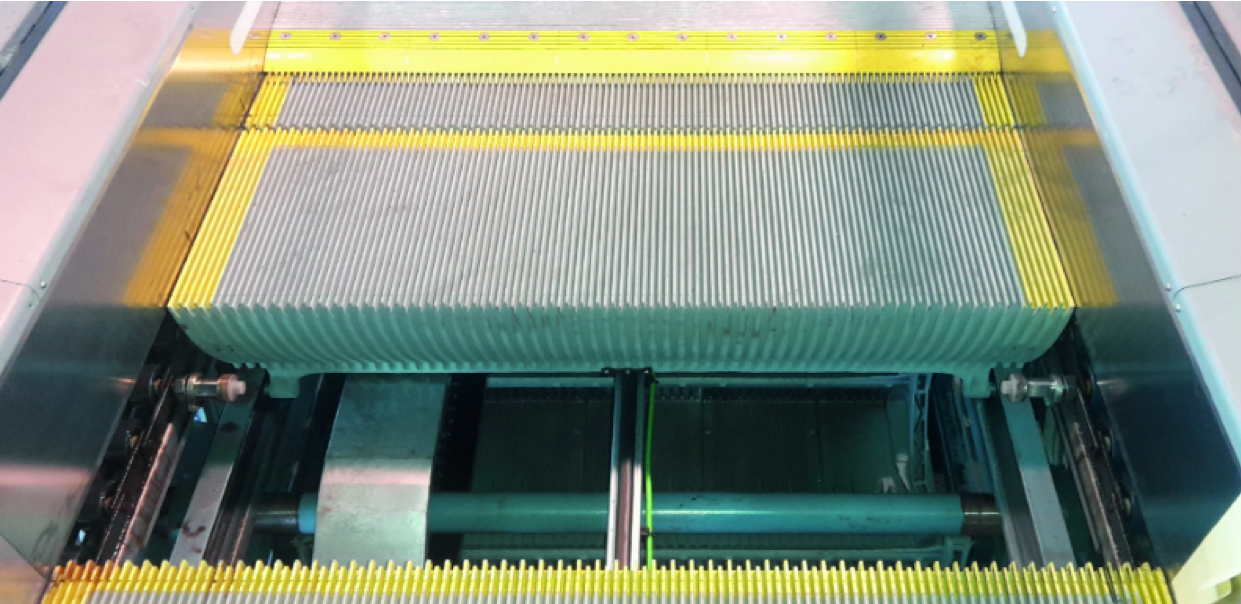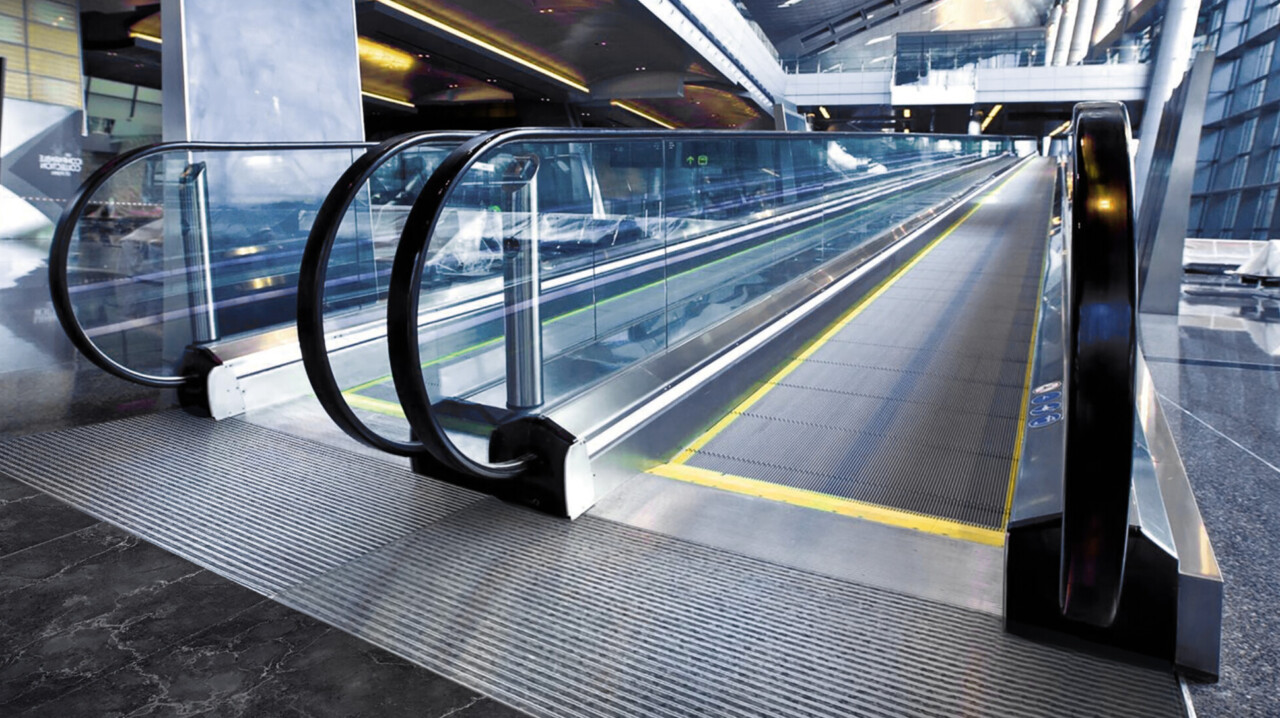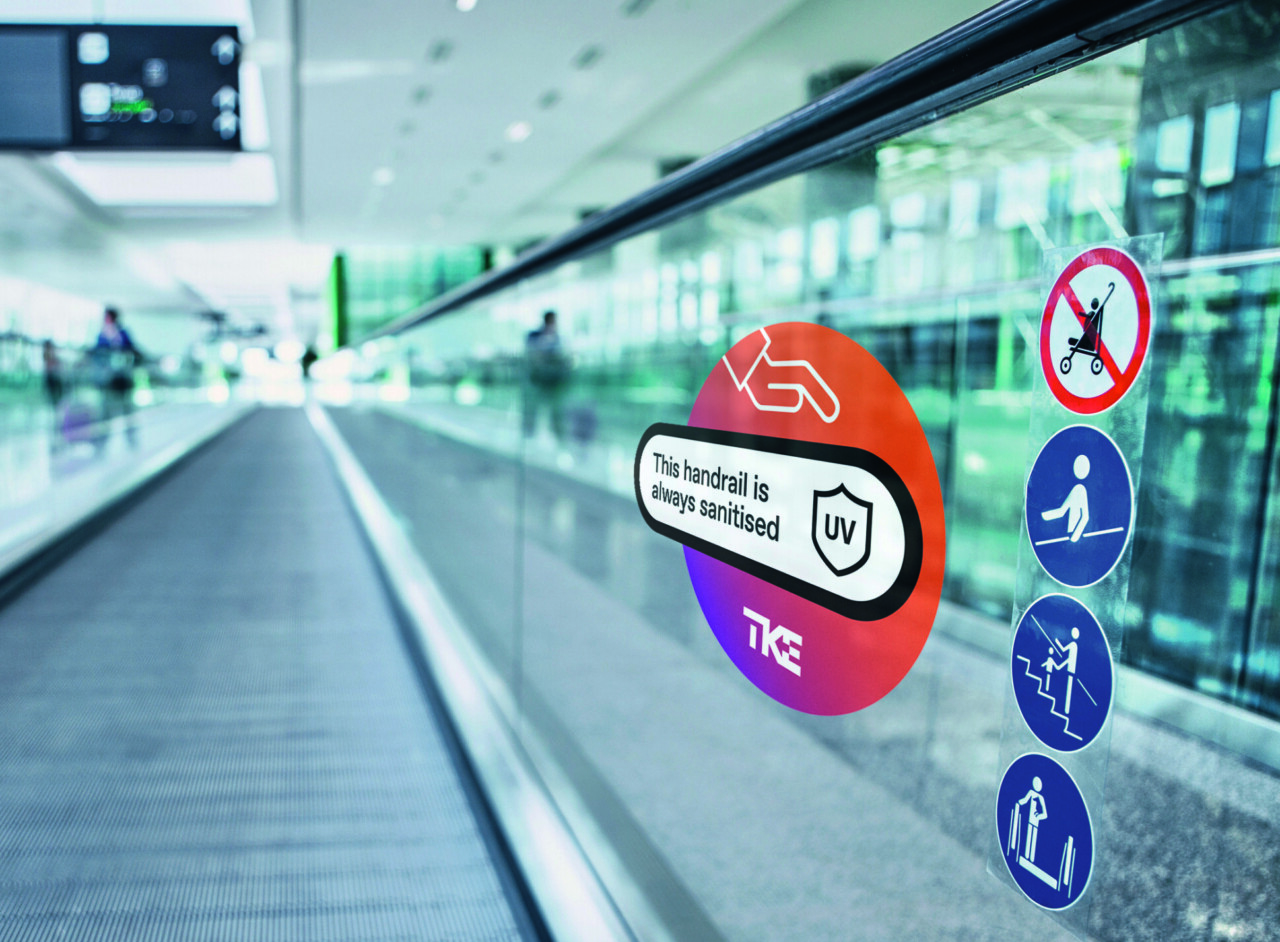Our escalator safety innovations
Escalator safety curtain
 Whenever escalators or moving walks are located in a void, the installation of Safety Curtains lowers the risks of misuse and prevents passengers from falling over the balustrade. Safety Curtains consist of one or two additional glass balustrades placed along the escalator or moving walk. They drastically lower the risk of passengers falls and are recommended for infrastructure and commercial units that are installed in open environments (e.g. atriums).
Continuous step monitoring
 The collapse of an escalator step or moving walk pallet is a very rare accident, cause is usually related to a passenger carrying objects that get stuck in the machine, but its consequences are severe for passengers. The installation of a continuous broken step / pallet monitoring that runs along the full length of the escalator or moving walk provides a solution to avoid risk of sagging or breakage of the steps / pallets in the middle of the machine, preventing passengers from severe injuries.
Mats on cover plates
 Escalators become even safer for users when mats are integrated on the cover plates. The risk of slipping or falling is significantly reduced. Slips on landings, steps or pallets, which result in falls, form the majority of escalator accidents (32-48%). By integrating mats on the cover plates, we aim to provide added value for our customers by reducing the risk of slips and falls. Our solution meets the R11 anti-slip assessment group requirements and even goes beyond the newest escalator codes.
Handrail sanitization solution
 Millions of people ride escalators daily, and our obligation to look after their well-being has never been more important. As our world recovers from the recent crisis, it’s essential to work together to minimise disease transmission risks while providing cleaner and safer handrails. Installed in the interior of the escalator, the module uses UV-C wavelengths to continuously eliminate microbes from the handrail surface. Studies have shown UV-C wavelengths to be effective against bacteria and viruses through penetrating their cells and damaging the DNA or RNA containing their genetic code. Built-in side reflectors are used to irradiate the entire handrail surface, including the sides. Multiple modules may be used for longer handrails. |